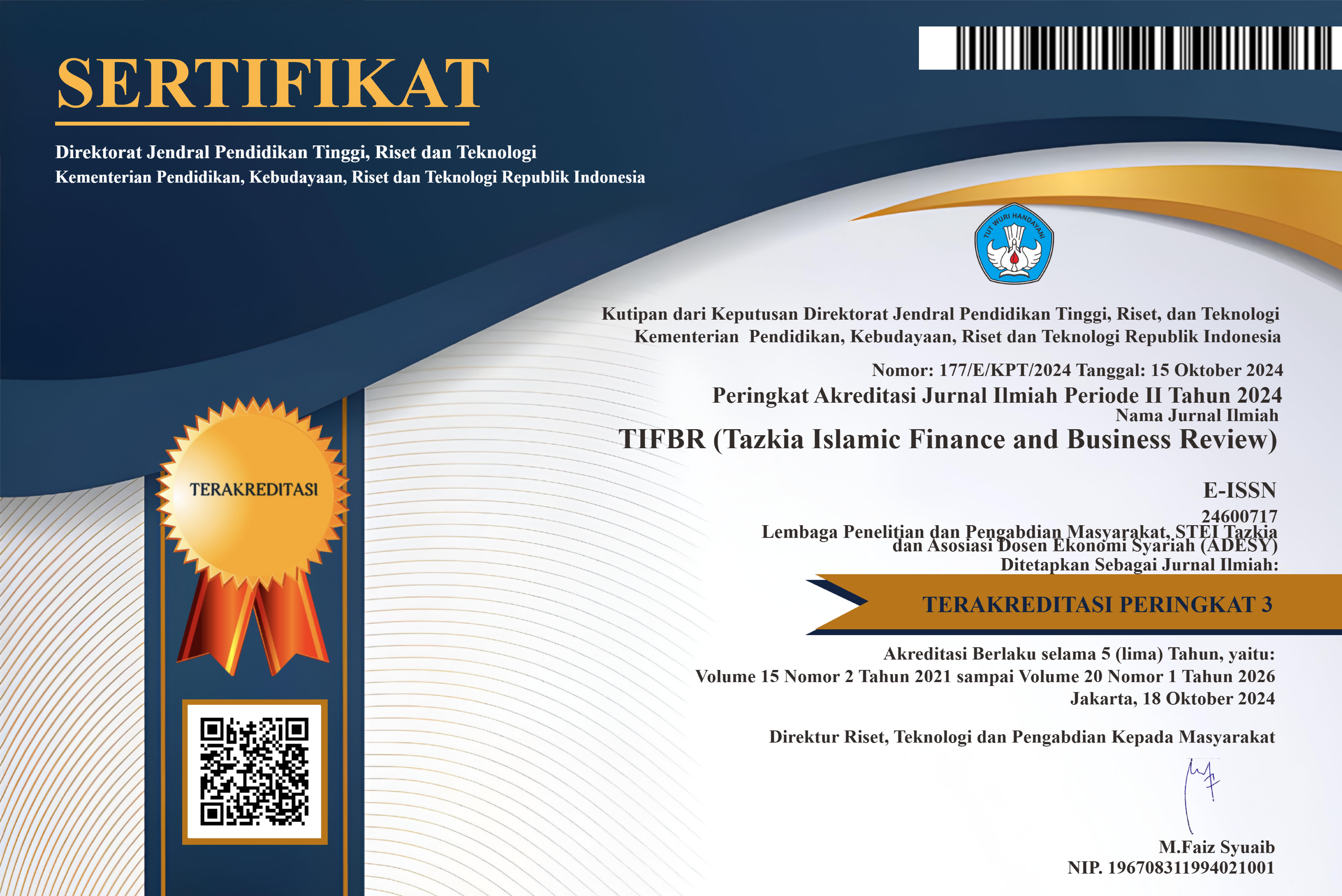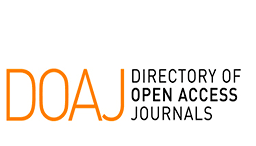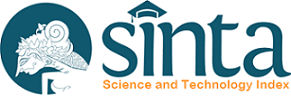Managing Islamic Financial Planning Inclusion in Indonesia
DOI:
https://doi.org/10.30993/tifbr.v15i1.243Kata Kunci:
Financial Planning, Islamic Financial Inclusion, Islamic FinanceAbstrak
Indonesia is a country with the largest Muslim population. However, the understanding of Islamic finance is still limited. Meanwhile, more people are becoming more aware of the importance of managing personal finances. The interest of Muslim community to financial planning is a great opportunity to improve Islamic financial inclusion. The community is not only learning how to control personal finance according to Islamic principles, but also knows how and where to invest funds in compliance to shariah principles. Long-term impacts can increase the share of the Islamic financial market in Indonesia, both in the Islamic banking sector, Islamic insurance, sukuk, Islamic capital market, or fintech. Thus the shariah ecosystem could be strengthened further. This paper surveys the literature in the area of Islamic financial planning, and aims to design the basic concepts of Islamic personal financial planning needs, as well as to compare it with conventional personal financial planning. The next stage is to calculate the factors that could increase the inclusion of Islamic personal financial planning. The output of this study is a conceptual framework of Islamic financial planning that could also improve Islamic financial literacy and inclusion.
Referensi
[2] A. Dennis, “Amid uncertainty, financial planning clients stick with long-term plans - Journal of Accountnacy,” Journal of Acccountancy, Jun. 24, 2020. https://www.journalofaccountancy.com/news/2020/jun/cpa-financial-planning-clients-stick-with-long-term-plans-amid-coronavirus.html (accessed Sep. 27, 2020).
[3] P. Wijayanti, “FE Unissula Tekankan Pentingnya Sakinah Finance - Universitas Islam Sultan Agung Semarang,” UNISSULA, Oct. 16, 2020. http://unissula.ac.id/c24-berita-unissula/fe-unissula-tekankan-pentingnya-sakinah-finance/ (accessed Oct. 18, 2020).
[4] FPSB Indonesia, “Definisi Perencaan Keuangan,” Financial Planning Standards Boards (FPSB) Indonesia. http://www.fpsbindonesia.net/index.php?menu=publikmedia (accessed Sep. 27, 2020).
[5] Financial Services Authority, “Siaran Pers Survei OJK 2019 Indeks Literasi Dan Inklusi Keuangan Meningkat,” Otoritas Jasa Keuangan, Nov. 07, 2019. https://www.ojk.go.id/id/berita-dan-kegiatan/siaran-pers/Pages/Siaran-Pers-Survei-OJK-2019-Indeks-Literasi-Dan-Inklusi-Keuangan-Meningkat.aspx (accessed Sep. 28, 2020).
[6] F. Amilahaq, P. Wijayanti, N. E. Mohd Nasir, and S. Ahmad, “Digital platform of zakat management organization for young adults in indonesia,” in Advances in Intelligent Systems and Computing, Jul. 2020, vol. 1194 AISC, pp. 454–462, doi: 10.1007/978-3-030-50454-0_46.
[7] BNI Syariah, “Dukung Inklusi Keuangan Syariah, Pemerintah Kembangkan Ekosistem Ekonomi dan Keuangan Syariah Berbasis Pondok Pesantren - Siaran Pers | BNI Syariah,” BNI Syariah, Aug. 07, 2020. https://www.bnisyariah.co.id/id-id/beranda/berita/siaranpers/articleid/2921 (accessed Oct. 01, 2020).
[8] Kaltim Post, “Literasi dan Indeks Inklusi Keuangan Syariah Masih Rendah | Kaltim Post,” Pro Kaltim, Aug. 26, 2020. https://kaltim.prokal.co/read/news/375865-literasi-dan-indeks-inklusi-keuangan-syariah-masih-rendah.html (accessed Oct. 01, 2020).
[9] Koran Jakarta, “Literasi dan Inklusi Keuangan Syariah masih Rendah | Koran Jakarta,” Koran Jakarta, Jul. 17, 2020. http://www.koran-jakarta.com/literasi-dan-inklusi-keuangan-syariah-masih-rendah/ (accessed Oct. 01, 2020).
[10] L. Puspaningtyas and N. Zuraya, “Tingkat Inklusi Keuangan Syariah Indonesia Turun | Republika Online,” Republika, Dec. 04, 2019. https://republika.co.id/berita/q1zefb383/tingkat-inklusi-keuangan-syariah-indonesia-turun (accessed Oct. 01, 2020).
[11] A. Nurrahman and A. Hartoyo, “Literasi dan Edukasi Keuangan Syariah Akan di Dorong dengan Implementasi MEKSI,” Komite Nasional Ekonomi dan Keuangan Syariah (KNEKS), Dec. 11, 2019. https://knks.go.id/berita/205/literasi-dan-edukasi-keuangan-syariah-akan-di-dorong-dengan-implementasi-meksi?category=1 (accessed Oct. 01, 2020).
[12] L. Puspaningtyas and F. Yolanda, “OJK Tegaskan Inklusi Keuangan Syariah tidak Berkurang | Republika Online,” Republika, Dec. 10, 2019. https://republika.co.id/berita/q2a9gr370/ojk-tegaskan-inklusi-keuangan-syariah-tidak-berkurang (accessed Oct. 01, 2020).
[13] E. Amalia, “Peningkatan Literasi dan Inklusi Keuangan Syariah di Indonesia melalui Pemanfaatan Teknologi Informasi | Ekonomi Syariah,” Masyarakat Ekonomi Syariah, Jul. 08, 2020. http://www.ekonomisyariah.org/id/11340/peningkatan-literasi-dan-inklusi-keuangan-syariah-di-indonesia-melalui-pemanfaatan-teknologi-informasi/ (accessed Oct. 01, 2020).
[14] C. Zeamer and A. Estey, “For Love or Money? Factors Associated With the Choice Between Couple-Based Versus Individual Financial Coaching,” J. Financ. Couns. Plan., p. JFCP-18-00056, Jul. 2020, doi: 10.1891/JFCP-18-00056.
[15] P. Pangeran, “PRAKTIK PERENCANAAN KEUANGAN: STUDI EMPIRIS TENTANG SIKAP DAN PERILAKU KEUANGAN RUMAH TANGGA DESA | Pangeran | KINERJA,” Kinerja J. Bus. Econ., vol. 17, no. 2, pp. 197–216, 2013, Accessed: Oct. 22, 2020. [Online]. Available: http://ojs.uajy.ac.id/index.php/kinerja/article/view/380.
[16] K. T. Kim, T.-Y. Pak, S. H. Shin, and S. D. Hanna, “The relationship between financial planner use and holding a retirement saving goal: A propensity score matching analysis,” Financ. Plan. Rev., vol. 1, no. 1–2, p. e1008, Mar. 2018, doi: 10.1002/cfp2.1008.
[17] R. Yao, W. Wu, and C. Mendenhall, “Use of Advisors and Retirement Plan Performance,” J. Financ. Couns. Plan., p. JFCP-18-00087, Apr. 2020, doi: 10.1891/jfcp-18-00087.
[18] M. Ryan and B. Cude, “Financial Advice, Plan Choice, and Retirement Plan Satisfaction,” J. Financ. Couns. Plan., p. JFCP-18-00050, Jul. 2020, doi: 10.1891/JFCP-18-00050.
[19] H. S. Putra, “Bagaimanakah Perencanaan Keuangan Islami? | Republika Online,” Jun. 15, 2013. https://republika.co.id/berita/konsultasi/motivasi-keuangan/13/06/14/modtae-bagaimanakah-perencanaan-keuangan-islami (accessed Sep. 27, 2020).
[20] G. Scott, “Financial Planner Definition,” Investopedia, May 24, 2020. https://www.investopedia.com/terms/f/financialplanner.asp (accessed Sep. 27, 2020).
[21] L. Smith, “Financial Planners vs. Financial Advisors - SmartAsset,” SmartAsset, Jun. 05, 2020. https://smartasset.com/financial-advisor/financial-planner-vs-financial-advisor (accessed Sep. 27, 2020).
[22] H. Ahmed and A. M. H. A. P. M. Salleh, “Inclusive Islamic financial planning: a conceptual framework,” Int. J. Islam. Middle East. Financ. Manag., vol. 9, no. 2, pp. 170–189, 2016, doi: 10.1108/IMEFM-01-2015-0006.
[23] Masyarakat Ekonomi Syariah, “Perencanaan Keuangan Syariah | Ekonomi Syariah,” Masyarakat Ekonomi Syariah (MES), Sep. 07, 2017. http://www.ekonomisyariah.org/id/6574/perencanaan-keuangan-syariah/ (accessed Sep. 27, 2020).
[24] A. Bratadharma, “Hidup Berkah Lewat Atur Keuangan Secara Syariah - Medcom.id,” Medcom.id, Jun. 09, 2018. https://www.medcom.id/ekonomi/mikro/5b2VJxeb-hidup-berkah-lewat-atur-keuangan-secara-syariah (accessed Sep. 27, 2020).
[25] H. Mat Nawi, “Financial Planning Framework: Empirical Evidence on Muslim Households in Malaysia,” Can. Soc. Sci., vol. 14, no. 5, pp. 11–16, May 2018, doi: 10.3968/10340.
[26] Departemen Ekonomi dan Keuangan Syariah, “Literasi Ekonomi Syariah,” Jakarta, 2020.
[27] S. Puspitasari, A. J. W. Mahri, and S. A. Utami, “Indeks Inklusi Keuangan Syariah di Indonesia,” Amwaluna J. Ekon. dan Keuang. Syariah, vol. 4, no. 1, pp. 15–31, Feb. 2020, doi: 10.29313/amwaluna.v4i1.5094.
[28] E. Norman, “KEBIJAKAN KEUANGAN INKLUSIF DALAM PERSPEKTIF EKONOMI SYARIAH,” Reslaj Relig. Educ. Soc. Laa Roiba J., vol. 2, no. 1, pp. 33–40, Jun. 2020, doi: 10.47467/reslaj.v2i1.134.
[29] M. Silvy and N. Yulianti, “SIKAP PENGELOLA KEUANGAN DAN PERILAKU PERENCANAAN INVESTASI KELUARGA DI SURABAYA,” J. Bus. Bank., vol. 3, no. 1, p. 57, May 2013, doi: 10.14414/jbb.v3i1.254.
[30] D. Lubis and M. G. Ramadhoni, “Analisis Keterkaitan Inklusi Keuangan Syariah dengan Pembangunan di Negara Anggota OKI,” AL-MUZARA’AH, vol. 7, no. 2, pp. 1–16, Jan. 2020, doi: 10.29244/jam.7.2.1-16.
[31] S. Indriantoro and B. Supomo, Metodologi Penelitian Bisnis, 1st ed. Yogyakarta: BPFE Yogyakarta, 1999.
[32] U. Sriwidodo and Sumaryanto, “ANALISIS SELF CONTROL, PENGETAHUAN KEUANGAN, DAN PENGALAMAN KEUANGAN TERHADAP PERENCANAAN INVESTASI,” J. Ekon. dan Kewirausahaan, vol. 18, no. 1, pp. 76–82, Nov. 2018, Accessed: Oct. 22, 2020. [Online]. Available: http://ejurnal.unisri.ac.id/index.php/Ekonomi/article/view/2317.
[33] L. Fan, “Information Search, Financial Advice Use, and Consumer Financial Behavior,” J. Financ. Couns. Plan., p. JFCP-18-00086, Apr. 2020, doi: 10.1891/jfcp-18-00086.
[34] N. M. Lestari, “PENGARUH TINGKAT LITERASI MAHASISWA PERBANKAN SYARIAH TERHADAP INKLUSI KEUANGAN PRODUK PERBANKAN SYARIAH DALAM TRANSAKSI E_COMMERCE | Jurnal Ekonomi Islam,” J. Ekon. Islam Fak. Agama Islam UHAMKA, vol. 10, no. 2, pp. 208–226, Nov. 2019, Accessed: Oct. 22, 2020. [Online]. Available: https://journal.uhamka.ac.id/index.php/jei/article/view/3764.
[35] Subiaktono, “PENGARUH PERSONALITY TRAITS TERHADAP PERENCANAAN KEUANGAN KELUARGA,” J. Din. Manaj., vol. 4, no. 2, 2014, doi: 10.15294/jdm.v4i2.2759.
[36] N. Saadah, “Perencanaan Keuangan Islam Sederhana dalam Bisnis E-Commerce pada Pengguna Online Shop,” Econ. J. Ekon. Islam, vol. 9, no. 1, p. 105, Jul. 2018, doi: 10.21580/economica.2018.9.1.2593.
[37] “Islamic Financial Planner | ArRIJAL & Partners.” https://arrijal9partners.wordpress.com/layanan/personal-financial-advisor/ (accessed Sep. 27, 2020).
##submission.downloads##
Diterbitkan
Cara Mengutip
Terbitan
Bagian
Lisensi
Hak Cipta (c) 2022 Author and Publisher

Artikel ini berlisensiCreative Commons Attribution-NonCommercial-ShareAlike 4.0 International License.

Tazkia Islamic Finance and Business Review (TIFBR) is licensed under a Creative Commons Attribution-NonCommercial 4.0 International License.
Authors who publish with this journal agree to the following terms:
- Authors retain copyright and grant the journal right of first publication with the work simultaneously licensed under a Creative Commons Attribution License that allows others to share the work with an acknowledgment of the work's authorship and initial publication in this journal.
- Authors are able to enter into separate, additional contractual arrangements for the non-exclusive distribution of the journal's published version of the work (e.g., post it to an institutional repository or publish it in a book), with an acknowledgment of its initial publication in this journal.
- Authors are permitted and encouraged to post their work online (e.g., in institutional repositories or on their website), as it can lead to productive exchanges, as well as earlier and greater citation of published work (See the Effect of Open Access).

















